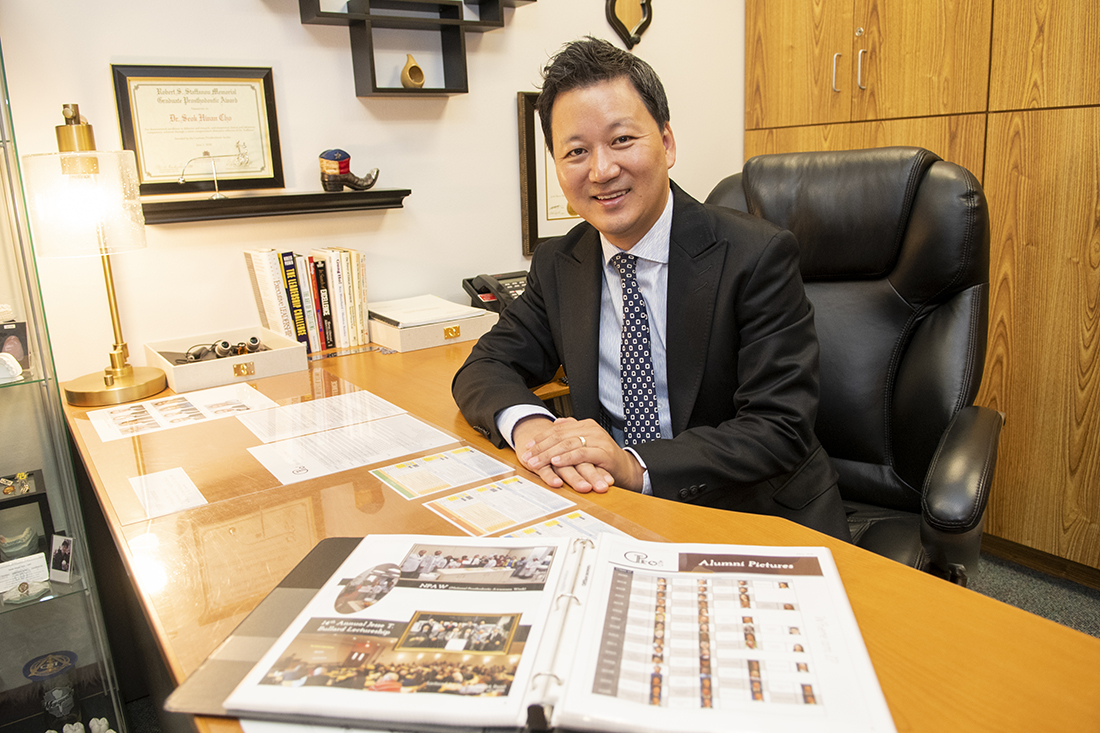Progress notes

Dr. Aaron Cho holds immense pride for the graduate prosthodontic program he oversees at Texas A&M College of Dentistry. After all, he completed the curriculum himself just eight years ago. Perhaps one of the most interesting facets of his leadership style is his penchant for showcasing what he considers the program’s strongest asset: its people. A pictorial family tree of all previous residents was the first project to tackle after he assumed directorship in September 2017. It offers a place for current graduate students, faculty and staff to see who has played a part in the program over the years. A newsletter, which Cho writes and designs, keeps everyone in the know.
While Cho gravitates toward esthetic ceramics and CAD/CAM — computer-aided design and manufacturing — he’ll tell you that the success of a program relies not just on new technologies but the balance between them and conventional methods. It’s something that stays top of mind through his work as a reviewer for The Journal of Prosthetic Dentistry and the Journal of Prosthodontics.
Now Cho talks “family” at work, the importance of those three years in advanced training and exciting advancements on the horizon.
Tell us about the importance of fostering a family feel in your department.
Feeling like a member of the family is very important for our program. The first thing I made as a program director was the ‘picture table’ of all previous residents by year, which shows the faces of previous residents on one page. This family tree of sorts represents the power and energy of our program. I hope all of my residents feel they are members of the family who can support and help each other.
You’re an alum of this program yourself. Why do you think graduate prosthodontic students pick us?
Most U.S. graduate programs have a similar format; however, the content is different. Our program’s educational structure and course content are well ordered by continuous updates. One of the rules I believe in is the “three-year-rule,” which means your three years of experience after graduation will determine your future 30-year practice pattern. Therefore, the three-year prosthodontic training is very significant for graduate students. That is why the educational content of the three-year training structure should be well-oriented to teach the resident. In addition, our program is balanced between conventional methods and new technology methods. Many candidates also mention the family environment as one of the unique strengths of our program.
Technology is revamping dentistry as we know it, including prosthodontics. What advancements are on the horizon in your field, and in your program, for that matter?
The most popular field in dentistry now is CAD/CAM treatment modalities, and 3D printing is a rising star in prosthodontics. There are many studies using 3D printing technology, such as selective laser melting and direct metal sintering. With virtual design software, we are able to design the smile, crown, wax-up, cast, surgical guide and denture without any physical stone casts. Even with facial scanning data, we will be able to take more accurate virtual jaw movements and make more efficient fabrication pathways for complex prosthodontic and implant cases.
Because our graduate prosthodontics program is well equipped with modern technology machines such as the 3D printer, lab scanner and intraoral scanner, I believe we will keep growing and become more attractive to candidates who are looking for modern dental technology. One of my goals is to introduce facial scanning technology to our program in the near future for our research and treatment planning. This will be exciting for all our residents.